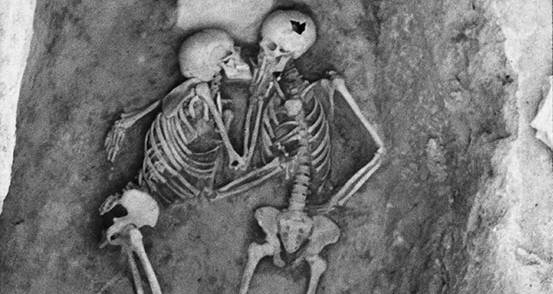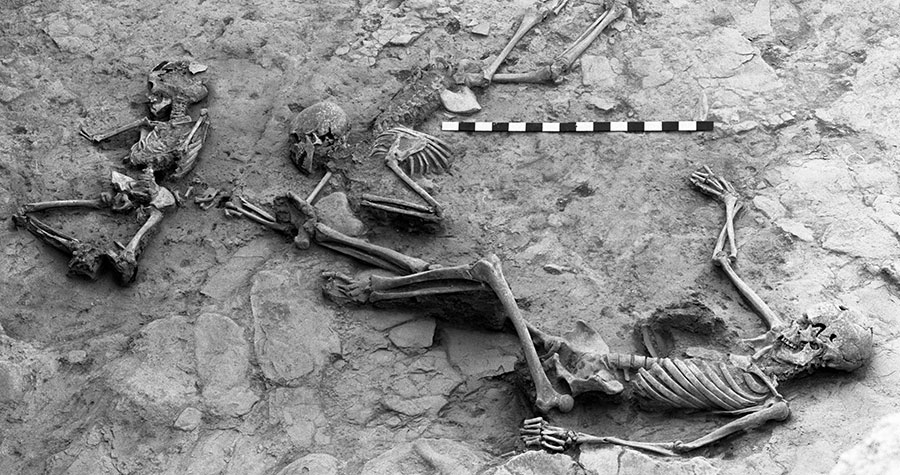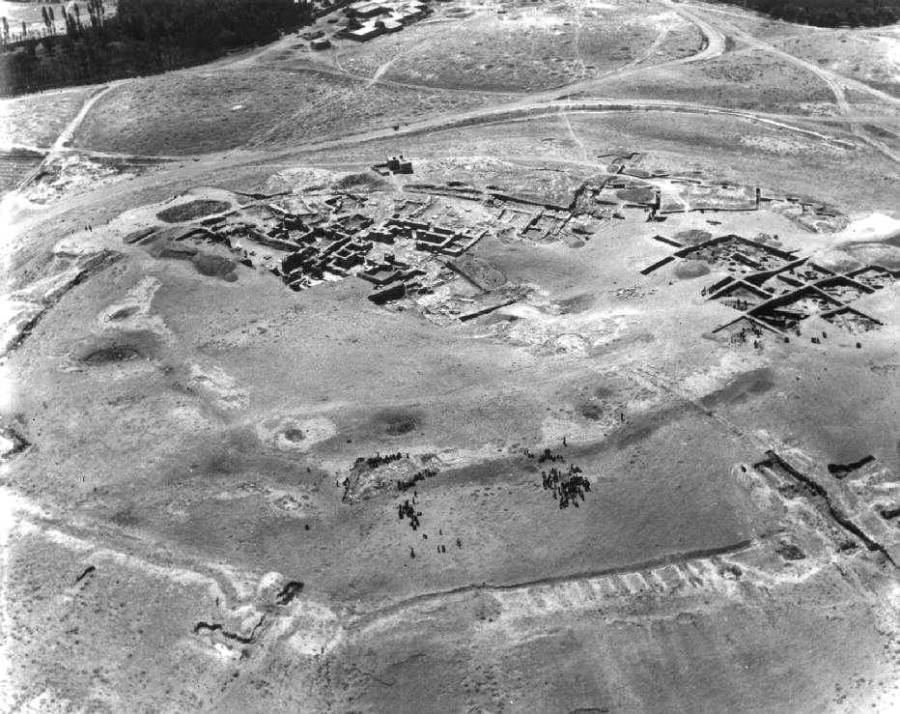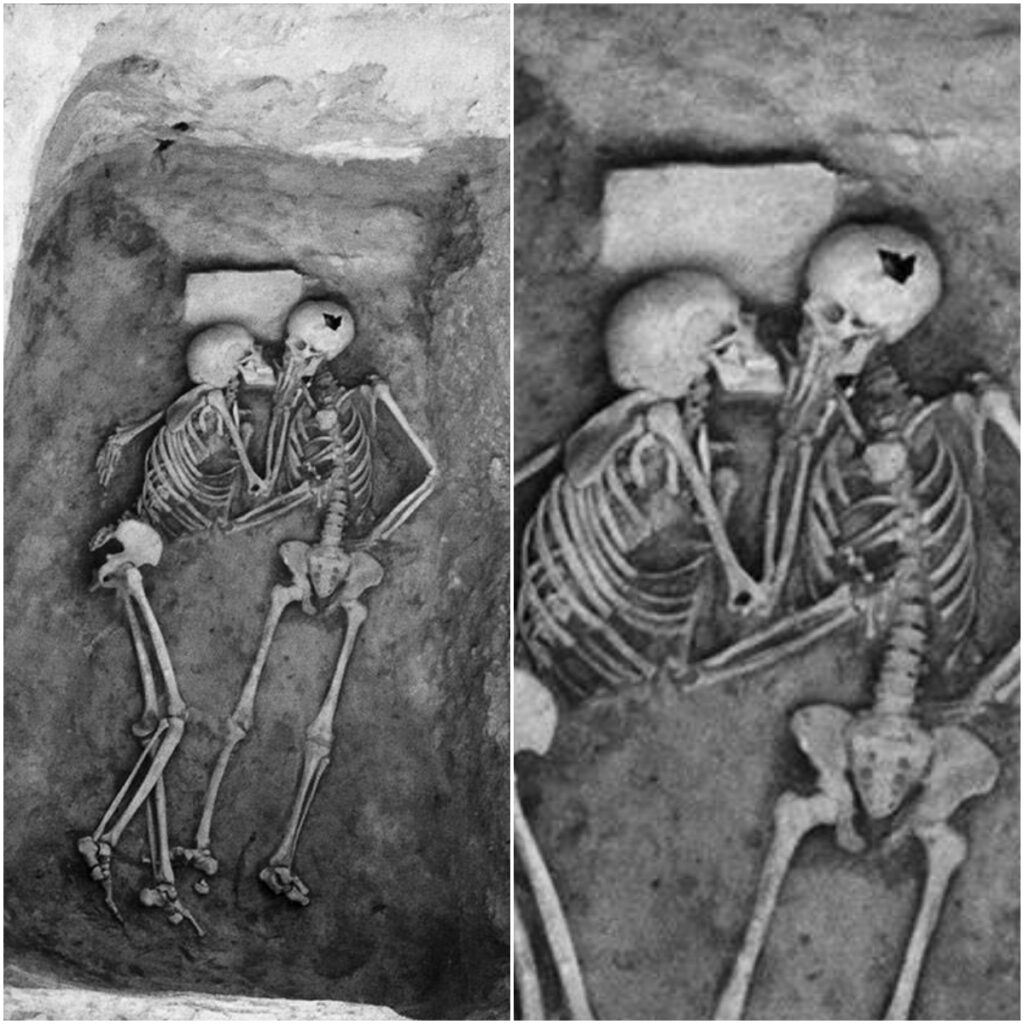The Hasanlu Lovers are a pair of human remains found at the Teppe Hasanlu archaeological site, located in the Naqadeh in the West Azerbaijan Province of Iran. Around 800 BCE, the city of Hasanlu, located in north-western Iran, was destroyed by an unknown invader. Inhabitants were slain and left where they fell.
Table of Contents
ToggleThe Hasanlu Lovers

In 1973, a University of Pennsylvania archaeological team led by Robert H. Dyson discovered the Hasanlu Lovers at the Teppe Hasanlu site in Iran’s West Azerbaijan Province. Dating back to around 800 BCE, these two skeletons were found in a bin, seemingly embracing at the moment of death, with no other artifacts except a stone slab under one of their heads. The city of Hasanlu was destroyed by unknown invaders, leaving its inhabitants where they fell. Approximately 246 skeletons were uncovered at the site, with the Lovers standing out due to their intimate pose. Both skeletons, identified as male, show no signs of injury, suggesting they may have died from asphyxiation. They were exhibited at the Penn Museum from 1974 until the mid-1980s and have sparked ongoing debate and fascination in the archaeological community.
The Archaeological Story of Hasanlu

Rediscovery and excavation

The skeletal remains of the Hasanlu Lovers were discovered together in a plaster-lined brick bin with minimal artifacts, except for a stone slab under one skeleton’s head. This find, directed by Robert H. Dyson, Jr. in 1973, dates back to around 800 BCE, during the final destruction of Hasanlu. Despite no lethal wounds, archaeologists believe the lovers perished together during an invasion. Oscar Muscarella proposed that a skull injury was accidental, possibly caused by a pickaxe. Found facing and embracing each other, the skeletons suggest they sought refuge in the bin, possibly asphyxiated by debris from a burning building during their tragic end.
Scientific analysis

Page Selinsky and Janet Monge extensively discuss the DNA testing conducted on the Hasanlu lovers and its correlation with their skeletal assessment of biological sex. Isotopic analysis was initially performed to examine their diets, revealing a variety including wheat, barley, sheep, and goats, typical of Hasanlu residents. Oxygen isotopes indicated the lovers were native to Hasanlu.
Both skeletons were concluded to be male based on pelvis morphology and DNA analysis. Skeleton SK 335, lying on its back, exhibited a narrow sciatic notch characteristic of males. Skeleton SK 336, initially identified as female due to a wide sciatic notch, was later determined male based on pelvis morphology and DNA. SK 335 was estimated to be 19–22 years old, while SK 336 was older, around 30–35 years old, based on dental and cranial features.
